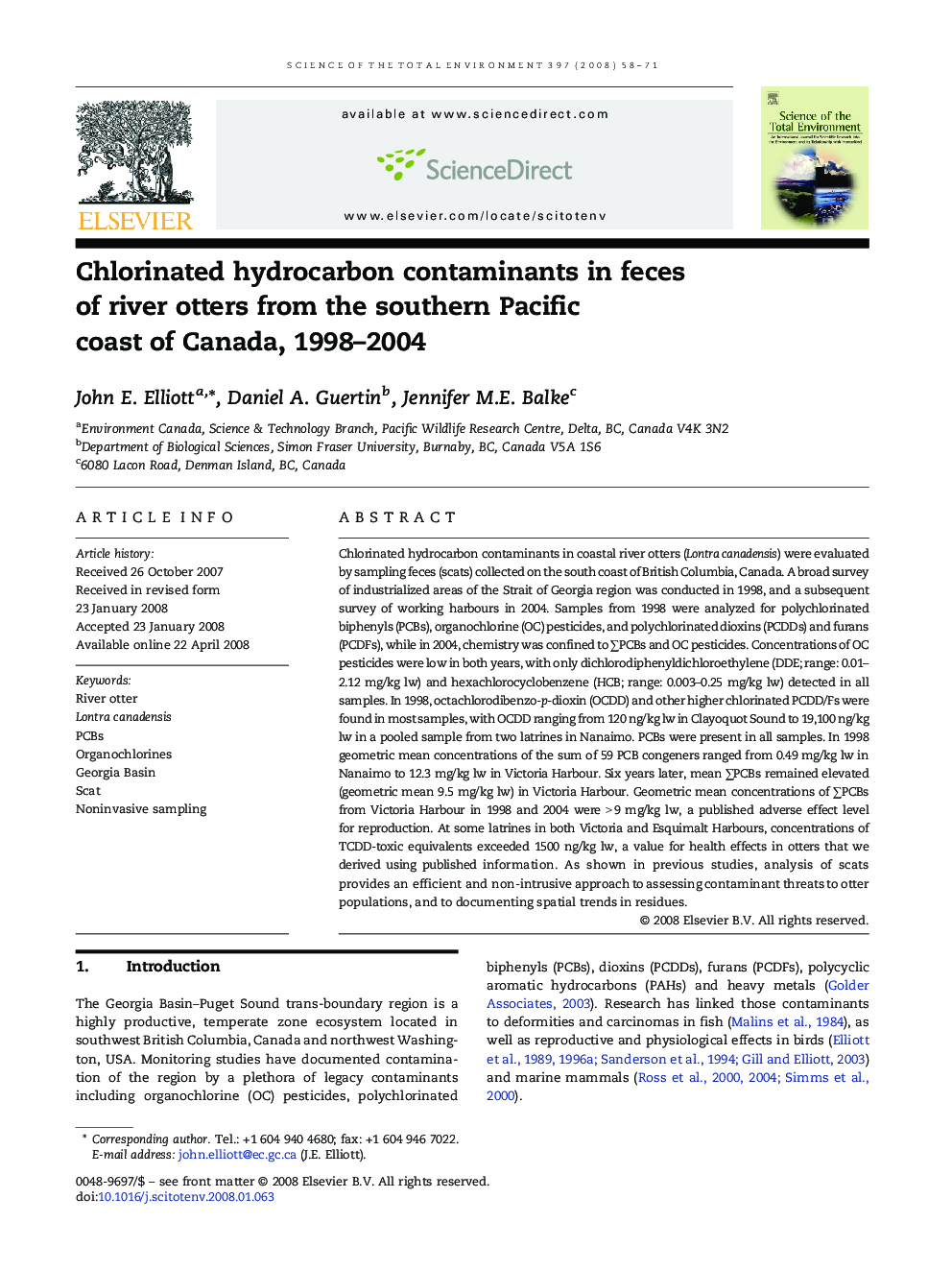| کد مقاله | کد نشریه | سال انتشار | مقاله انگلیسی | نسخه تمام متن |
|---|---|---|---|---|
| 4431611 | 1619922 | 2008 | 14 صفحه PDF | دانلود رایگان |

Chlorinated hydrocarbon contaminants in coastal river otters (Lontra canadensis) were evaluated by sampling feces (scats) collected on the south coast of British Columbia, Canada. A broad survey of industrialized areas of the Strait of Georgia region was conducted in 1998, and a subsequent survey of working harbours in 2004. Samples from 1998 were analyzed for polychlorinated biphenyls (PCBs), organochlorine (OC) pesticides, and polychlorinated dioxins (PCDDs) and furans (PCDFs), while in 2004, chemistry was confined to ∑PCBs and OC pesticides. Concentrations of OC pesticides were low in both years, with only dichlorodiphenyldichloroethylene (DDE; range: 0.01–2.12 mg/kg lw) and hexachlorocyclobenzene (HCB; range: 0.003–0.25 mg/kg lw) detected in all samples. In 1998, octachlorodibenzo-p-dioxin (OCDD) and other higher chlorinated PCDD/Fs were found in most samples, with OCDD ranging from 120 ng/kg lw in Clayoquot Sound to 19,100 ng/kg lw in a pooled sample from two latrines in Nanaimo. PCBs were present in all samples. In 1998 geometric mean concentrations of the sum of 59 PCB congeners ranged from 0.49 mg/kg lw in Nanaimo to 12.3 mg/kg lw in Victoria Harbour. Six years later, mean ∑PCBs remained elevated (geometric mean 9.5 mg/kg lw) in Victoria Harbour. Geometric mean concentrations of ∑PCBs from Victoria Harbour in 1998 and 2004 were > 9 mg/kg lw, a published adverse effect level for reproduction. At some latrines in both Victoria and Esquimalt Harbours, concentrations of TCDD-toxic equivalents exceeded 1500 ng/kg lw, a value for health effects in otters that we derived using published information. As shown in previous studies, analysis of scats provides an efficient and non-intrusive approach to assessing contaminant threats to otter populations, and to documenting spatial trends in residues.
Journal: Science of The Total Environment - Volume 397, Issues 1–3, 1 July 2008, Pages 58–71